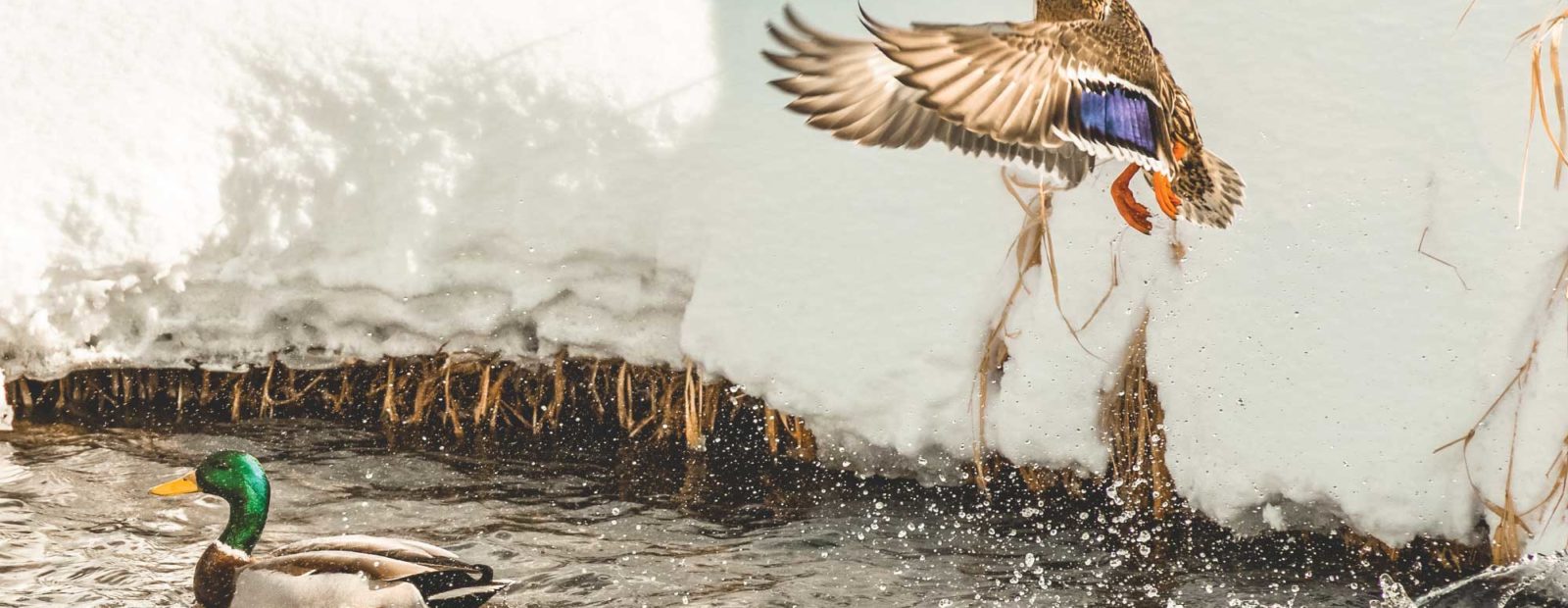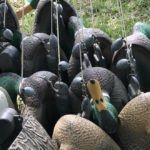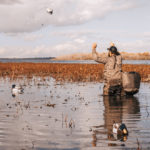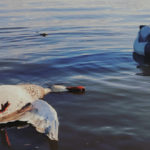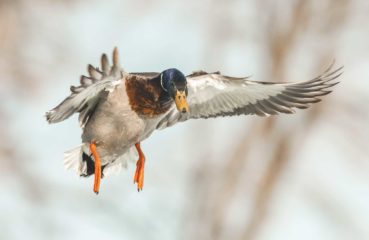When winter sets in, the mornings are considerably colder and the air hits like a whip touching any uncovered skin. No one understands this better than the waterfowl hunter. The season starts as summer and fall meet. As December hits and winter becomes official, the crowds disappear with the arrival of the ice. The waterfowl hunters who stick it out and push into this season often find some of the best opportunities. Open water is a welcome place for ducks to land. As a result, the best opportunities for jumping ducks come once the ice sets in.
One of the places that I like to hunt in the winter is full of hot water springs that feed into a lake. When the ice is on, the ducks don’t like to stick around but they do like to hang out in these open holes. The ice also pushes the ducks to streams and canals–really, anywhere that there is open moving water. Most of these places tend to have food available for ducks, which is especially helpful when the snow is heavy and covers the ground. Access to food is important for ducks to stay warm. Being able to locate these food sources is what makes jump shooting even more effective.
Preparation for a day of jump shooting
When I know I’m only going out to jump ducks, my preparation is a bit different than it is for sitting in a blind all day long. I dress for cold weather, but I don’t focus so much on thermal layers. I’m going to be staying mobile and I’m likely to get hot in my waders. In some cases, hip waders might even be the way to go depending on the depth of the waters you hunt. Many rivers have plenty of low spots for crossing and full waders can be cumbersome when hiking. My waders tend to rub where the knees bend, so hiking in my waders gets quite annoying and loud. Staying quiet is an important part of sneaking up on resting ducks.
Another aspect of my preparation is scouting for good spots by looking at maps. I use OnX Hunt to look at satellite images that help me identify more spots that I should try hunting. I can usually plan a path of travel to use some of the terrain in my favor. I have learned that using cover such as bushes and cattails can make it easier to sneak up on the ducks. It also helps to be able to see a topographic map and identify small ridges on the path that I’m walking. Ducks are very easily spooked and if I can walk around a small hill and get the jump on the ducks, it’s worth the extra distance.
The other things that I carry are my shotgun shells, duck strap, shooting earplugs and a way to retrieve the ducks. Shotgun shells are a given. I prefer Hevi Steel because of how it patterns in my shotgun and the fact that it doesn’t break the bank. The duck strap becomes especially handy when jumping ducks over multiple locations. Last season, I shot a double of drake mallards. I knew I would be running into more ducks along the way, so being able to rig my ducks to my duck strap and have my hands free for my shotgun is what made my next few shots possible. Hearing protection is also important. I choose Decibullz; there are many different brands, but the important part is that you can hear clearly while still being protected. Most ducks do a warning quack before taking off, so it’s best to be able to react to the concussion from the shotgun fire but still hear the quacks from the departing ducks. Finally, it’s important to have a way to retrieve any ducks that fall into deep water beyond the reach of your waders. I carry a tow strap while a friend of mine carries a small fishing pole with a bobber that he can cast over the duck to safely retrieve it to shore.
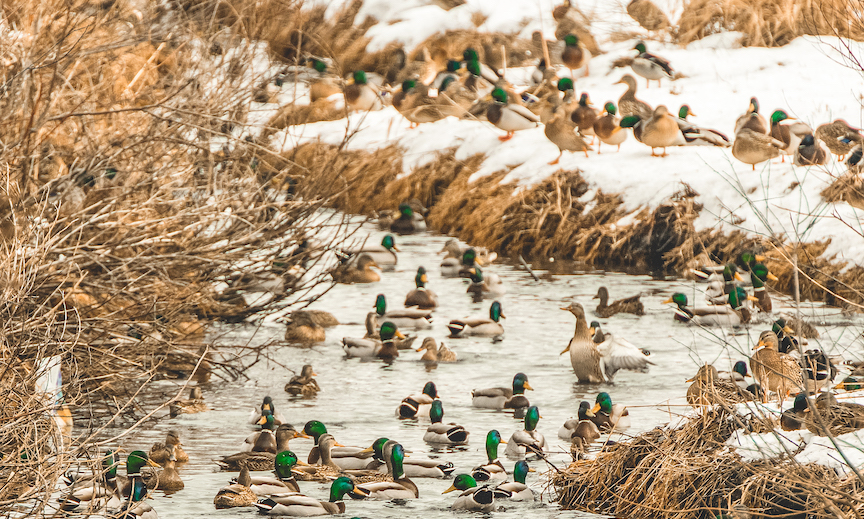
Tips and tactics for jump shooting ducks
To have a successful hunt, I consider a few different things. First and foremost is scouting. I’ll sit on a high spot in my truck and just watch the ducks fly around. It’s a good time to listen to podcasts or music and watch the skies for movement. I like to do this during heavy hunting times, because all of the shooting and movement gets more ducks up into the air and looking for spots where they aren’t going to be hunted. If I go during slow times, I watch for patterns and mark times that ducks are in certain areas.
Plan your movements carefully. Don’t just walk along a canal and hope for the best. Ducks spook easily, especially this late into the season. Just a twig breaking under your foot can send a flock flying out of range. The keys here are to use terrain features to cover you and be able to anticipate where the ducks may be. I use binoculars whenever possible to peek further down a canal or to sneak a look into a pond. This way I know where the ducks are and I can carefully move within range. If they take off, I can be ready to take a shot and, ideally, I can put myself in a perfect shooting position. When choosing a path, I like to look for clear areas to walk along that have tall vegetation around me. This allows me to control my steps more and gets me closer to the ducks.
Get out and get shooting
Jump shooting ducks can be a lot of fun. It’s also a great way to introduce new hunters to the sport, since it is more active than sitting in a blind all day and hoping for ducks to come. Winter does create better opportunities, but jump shooting ducks is something that can be done all season long. Ice minimizes the areas that ducks can hang out, which ultimately creates better opportunities for areas that you know remain open. Whether going from pond to pond or walking down a canal, these tactics can really help with jumping ducks in the winter.
Last modified: July 19, 2022


